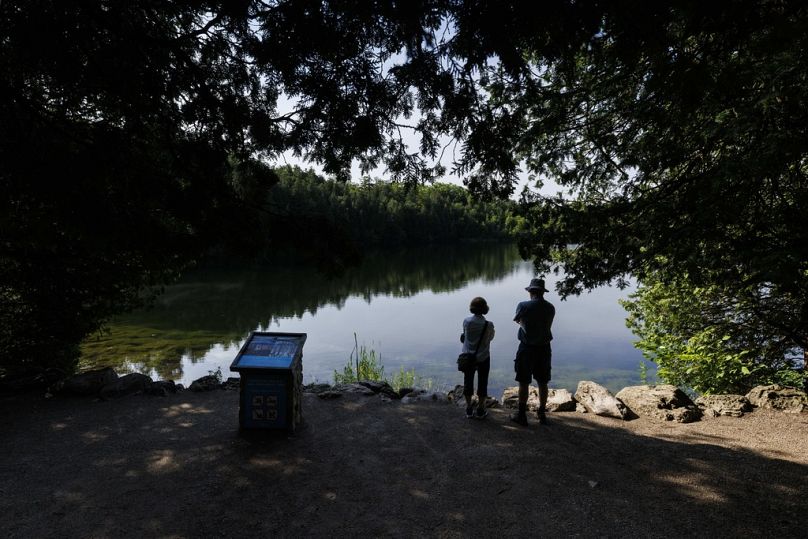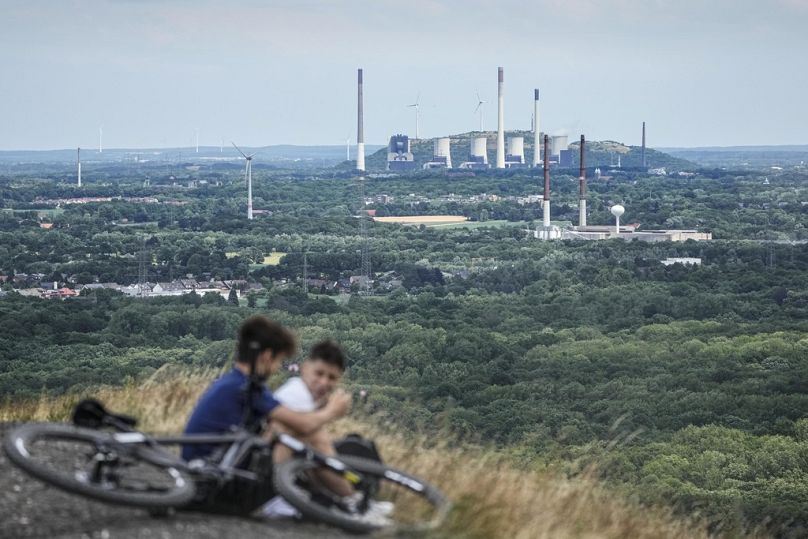Sediment at the bottom of the lake holds evidence of humanity's indelible impact on the planet.
Scientists believe that human activity has altered the geology, atmosphere and biology of Earth so much that it has now entered its newest epoch: the Anthropocene.
On Tuesday (11 July) the Anthropocene Working Group (AWG) released evidence that they believe shows the start of this new geological time period in the planet’s 4.5 billion year history.
Though climate change, pollution and biodiversity loss have all made an indelible impact on the world, it is a lake just outside of Toronto, Canada, that they say is the location which marks this geological break.
What are the signs of humanity’s ‘fingerprint’ on our planet?
Crawford Lake is a 29 metre deep body of water and it is this depth that makes it ideal for studying distinct historical environmental markers. Humanity’s effect on Earth’s atmosphere, soil and biology are all preserved in the sediment that lays at its bottom.
“The sediments found at the bottom of Crawford Lake provide an exquisite record of recent environmental change over the last millennia,” says Dr Simon Turner, secretary of the AWG from University College London.
Scientists believe they can pinpoint the exact start of the Anthropocene epoch by documenting what they call the “golden spike” in these layers of sediment. This is a sudden and dramatic - at least in geological terms - change in the conditions.
Part of this “spike” is the presence of plutonium at the bottom of the lake. The element only occurs naturally in trace amounts and so experts from the AWG concluded that it must have come from nuclear testing in the 1950s.
“The presence of plutonium gives us a stark indicator of when humanity became such a dominant force that it could leave a unique global ‘fingerprint’ on our planet,” says Professor Andrew Cundy from the University of Southampton, another member of the AWG.
He explains that, in samples taken around the world, “unprecedented” amounts of plutonium are seen in the 1950s when hydrogen bomb testing took place.
“We then see a decline in plutonium from the mid-1960s onwards when the Nuclear Test-Ban Treaty came into effect.”
What is the Anthropocene?
The name of the new epoch comes from the Greek terms for human and new. Other geological indicators proposed by scientists to show that it has begun include microplastic pollution, high levels of ash from coal fired power plants, and high concentrations of fertilisers.
All of these pieces of potential evidence coincide with ‘The Great Acceleration’ - a surge in human activity from transport to energy use that started in the mid-20th century.
Evidence to officially declare that we are now in the Anthropocene is still being evaluated. Over the last 20 years, scientists have argued that humanity’s impact on the planet means we have now entered this new distinct geological period.
The AWG has now proposed marking the start date as some time between 1950 and 1954. But other experts say that humans have existed for such a short time in Earth’s history that this can’t be defined as an epoch.
If the evidence is accepted it would mean a move out of the stable Holocene epoch that has spanned the last 11,700 years.
Before a final decision is made at a conference in 2024, the proposal must be approved by three different groups of geologists.













